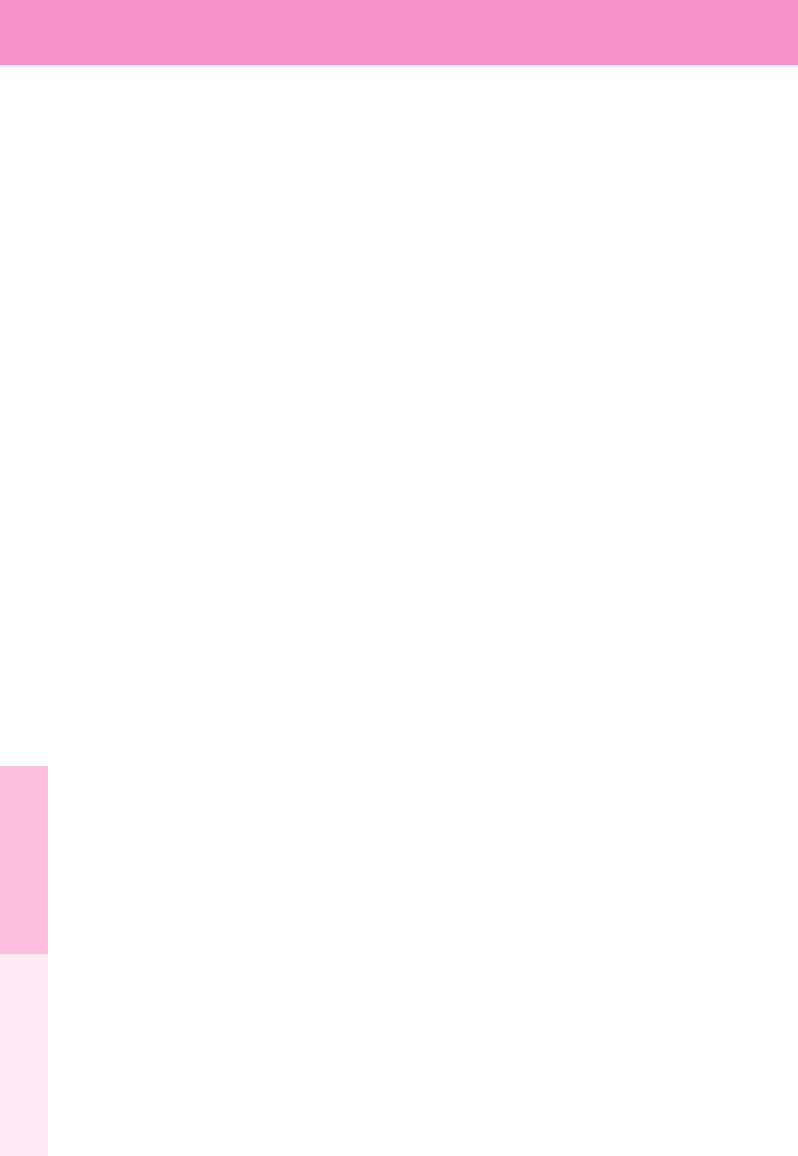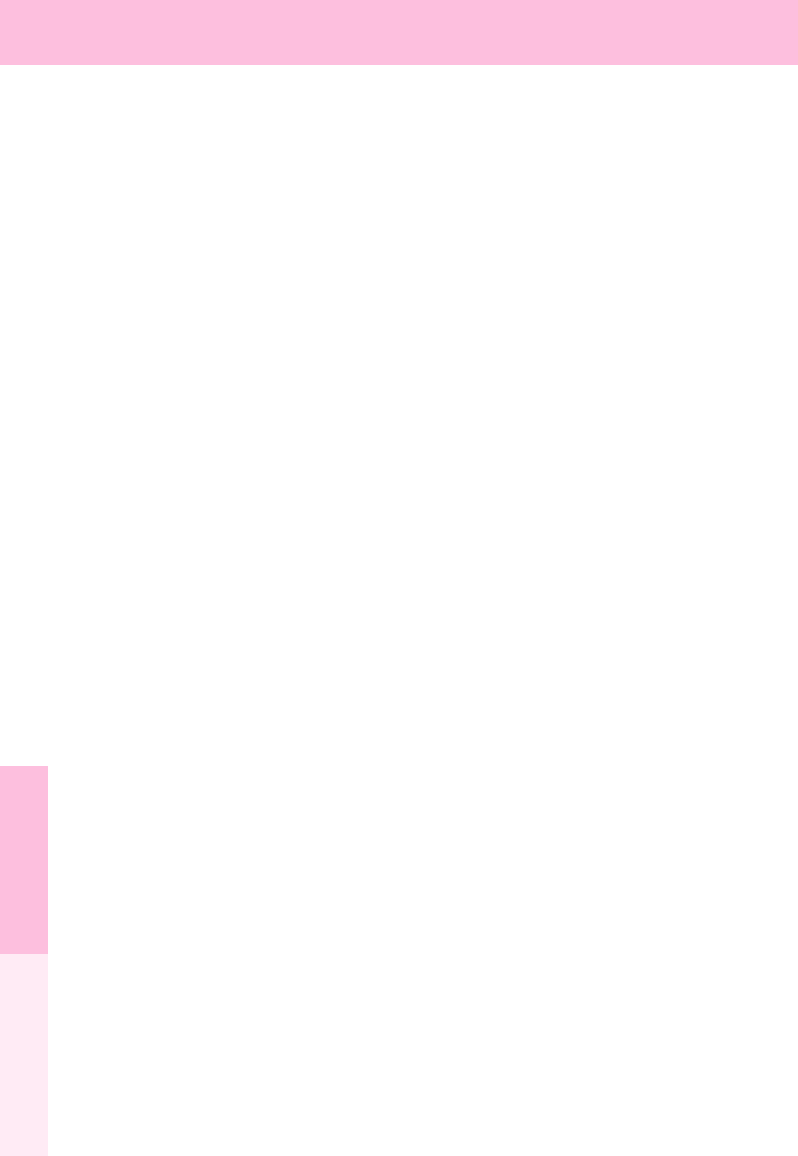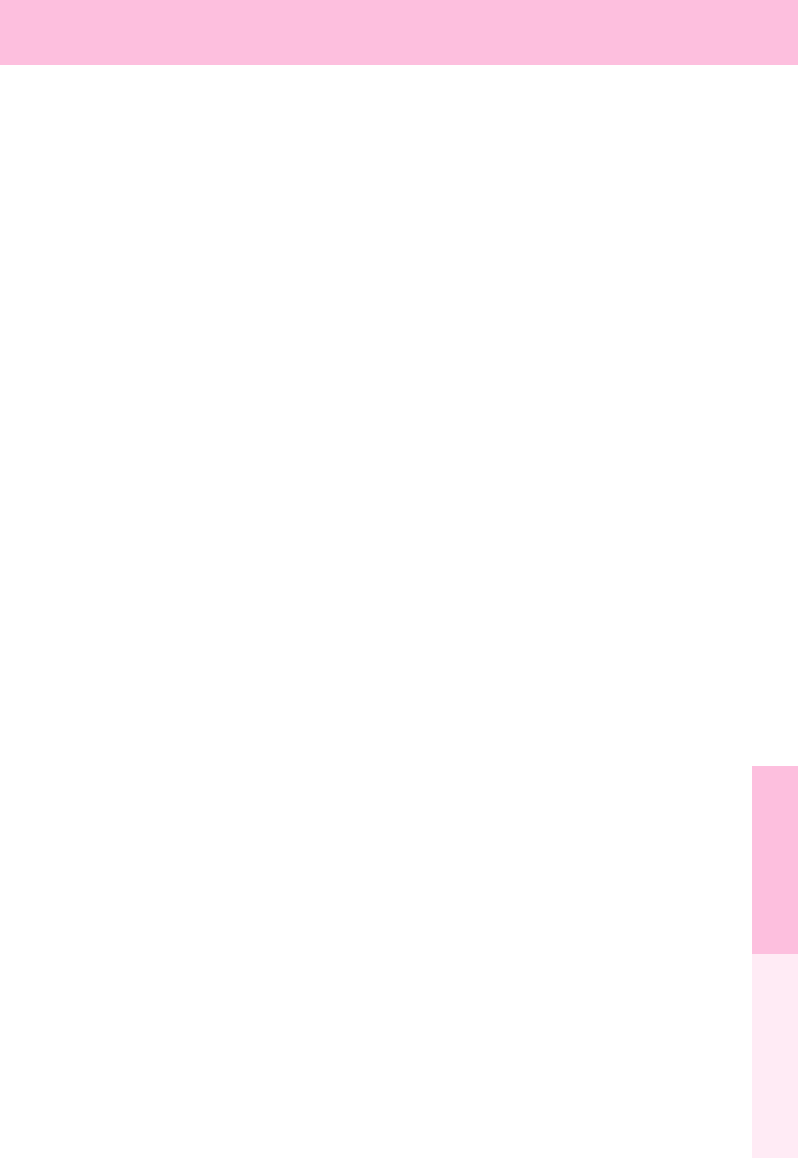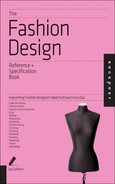
Job:02-30034 Title:RP-Fashion Design Ref and Spec Book
#175 Dtp:225 Page:194
192-197_30034.indd 194 2/27/13 5:05 PM
19 4 THE FASHION DESIGN REFERENCE + SPECIFICATION BOOK
(Text)
Chapter 18: Portfolios
At the beginning of a career, assembling a body of work is about presenting
depth and range: The goal is to show how well the designer sketches, styles,
and solves design challenges. Talented designers who have already explored
many genres of fashion must edit and compartmentalize their work.
PRESENTATION
A master portfolio will archive the complete breadth of the designer’s work. It is a good idea
to keep quality color reproductions organized into categories. Designers who specialize in cus-
tom eveningwear, say, will want to separate their bridal work from formal gowns, dinner suits,
and special occasion dresses. Within each category, the designer will want to demonstrate as
much variety as possible.
Each segment of the master portfolio can be bound into an independent volume of the port-
folio or presentation folder. Designers can work in any size, but traditionally choose 11" × 14"
and 14" × 17" (A3 and A2) formats for drawings and photographs. Quality scans, photographs,
or copies of the original work can also be reduced to fit in a smaller book that is easier to
carry. Hand-held electronic devices like the iTouch or iPhone now make it easy for the designer
to have a current portfolio readily available.
Look Book
When this process is undertaken for a speci c designer collection, the folio is often called
a “look book.” The idea is for the pages to be easily perused in the way that a catalogue or
magazine might be reviewed. The presentation style is important, because so much fashion
content is available to the general public that they are apt to take a certain standard of qual-
ity and creativity for granted. When these are lacking, it can undermine the designer’s true
purpose, which is to focus on the clothes and the ideas behind them. Look books can be
made up of sketches, but most big companies produce them with photographs that have been
created in a studio or captured on the runway.
Layout
Fashion designers must approach the assemblage of their work into a physical or a virtual
presentation with the mindset of a magazine editor. The more thought that goes into the dis-
tribution, repetition, scale, and ow of materials in their chosen format, the bigger the impact.
Designers need to address a number of questions: What will the content be composed of and
how will it be laid out? Which images will be repeated for effect, á la Warhol? Which images
will be cropped and resized based on importance and for variety? How will text be handled?
18
Job:02-30034 Title:RP-Fashion Design Ref and Spec Book
#175 Dtp:225 Page:194
192-197_30034.indd 194 2/27/13 5:05 PM

Job:02-30034 Title:RP-Fashion Design Ref and Spec Book
#175 Dtp:225 Page:195
Book
e:194
192-197_30034.indd 195 2/27/13 5:05 PM
19 5
(Text)
s-
s
,
er
n
.
d
Editor Carmel Snow and fashion editor Diana Vreeland
reviewing layouts at Harper’s Bazaar, 1952
Photograph by Walter Sanders/Time Life Pictures/Getty Images.
18
Job:02-30034 Title:RP-Fashion Design Ref and Spec Book
#175 Dtp:225 Page:195
Book
e:194
192-197_30034.indd 195 2/27/13 5:05 PM

Job:02-30034 Title:RP-Fashion Design Ref and Spec Book
#175 Dtp:225 Page:196
192-197_30034.indd 196 2/27/13 5:05 PM
19 6 THE FASHION DESIGN REFERENCE + SPECIFICATION BOOK
(Text)
Will words be manipulated graphically to reinforce an idea? What is the role of black-and-
white images versus color? What will be the weight and nish of the paper? How will someone
navigate through these images on a computer screen? Will the computer-generated pages ip
with a mouse click or slide over with a touch of the screen? Will the viewer require the aid of
menus, thumbnails, and links?
Although a portfolio or look book is an artistic archive, ultimately it is a tool for communica-
tion. The designer is looking to convey a message, cull critical accolades, and make the sale
or get the job. The portfolio exercise should employ the techniques used in good information
design. This means that content should deliver something substantial, the layout should
take the viewer on an interesting journey, and the artistry with which it is undertaken should
captivate. Embellishments should not merely decorate but always inform and amplify the
designer’s message.
Digital Folio
Any creative content produced today should have a digital counterpart. In this way, it can
easily be shared on a CD or be posted to a website. Digital photographs or scans should be
cleaned up and enhanced for the screen, where resolution and contrast play different roles
from the ones they do in printed materials. Online, thumbnails of the full image or close-ups
of one section can be used to link to larger versions of the photograph. Collections can also
be presented as slideshows or linked to videos. By such maneuvers, designers can determine
how a visitor ips through the images of their work.
APPROACHES
Newsroom
The fast pace of the fashion world places time at a premium. Media runs at an even faster
pace. The experienced designer knows that by making readily available anything a journalist
might need, they improve their chances of getting coverage—assuming, of course, that the
material is also newsworthy. The old-school press kit can seem outdated, if only in that it can-
not be accessed instantly the way an online version can. Every designer’s website should have
an area dedicated to press that the designer has collected and another that provides content
that a writer can use to develop a story.
Collateral
Personal designer collateral comprises a résumé or curriculum vitae (CV), a designer’s state-
ment of philosophy, a downloadable high-resolution headshot, and a business card. For the
design rm, the formula includes a mission statement, press clippings, designer biography
a
a
Ta
O
th
w
lio
co
p
it
O
(w
s
a
sc
of
V
S
h
ti
w
m
of
s
U
S
id
p
a
m
(y
e
18
Job:02-30034 Title:RP-Fashion Design Ref and Spec Book
#175 Dtp:225 Page:196
192-197_30034.indd 196 2/27/13 5:05 PM

Job:02-30034 Title:RP-Fashion Design Ref and Spec Book
#175 Dtp:225 Page:197
Book
e:196
192-197_30034.indd 197 2/27/13 5:05 PM
Portfolios 197
(Text)
e
p
e
-
e
and headshot, images that represent the company’s work as well as customized letterhead
and envelopes. Logos, fonts, and information must be legible and consistent.
Take Away
One way to add value to a portfolio and extend its reach is accomplished with a take away. In
the modeling industry, professional models will attend go-sees where they and their portfolios
will be reviewed and considered for the job in question. Tucked into a pocket in most portfo-
lios are composite cards that a model can leave behind as a reference and a reminder. These
composites are photographic calling cards that will include stats, a headshot, and a variety of
photographs that capture the model’s range. Fashion designers can create a similar compos-
ite that highlights the best of their work.
Online, the take away can be handled with a downloadable image. Designers might even offer
(with the permission of the artist) a free MP3 download of music featured in a recent fashion
show or played on their website. Even just providing a link to iTunes or Amazon is the sign of
a thoughtful online host. A blog is another way for the designer to add distinction. Behind-the-
scenes pictures or videos, a journal of the process, rough sketches, and links to the sources
of their inspiration help to forge a stronger bond between the designer and their audience.
Virtual Networking
Social networking (Facebook, MySpace, Twitter) and professional networking (LinkedIn) sites
have become invaluable tools for building communities and disseminating information. Cau-
tionary tales about a lack of privacy or impropriety aside, when used by fashion professionals
with a little common sense, these sites can go a long way toward cultivating, organizing, and
maintaining professional relationships. The casual social energy that propels the popularity
of these services creates a comfortable environment in which to interact. In many cases, the
successful online experience extends into the real world where like minds can meet live.
URL and Email
Securing a unique URL (Uniform Resource Locator) address from a domain registrar is a good
idea for any designer who is planning to have a presence on the Web. Yourname.com adds a
professional touch to any résumé and provides a memorable, easy-to-access destination for
anyone interested in a designer’s work. For new design businesses, it has become as funda-
mental as having a business card. Many registrars also offer emails associated with the URL
(you@yourname.com) as well as hosting for web pages or websites. The designer’s URL and
email address should avoid sounding amateurish, convoluted, or inappropriately provocative.
18
Job:02-30034 Title:RP-Fashion Design Ref and Spec Book
#175 Dtp:225 Page:197
Book
e:196
192-197_30034.indd 197 2/27/13 5:05 PM
..................Content has been hidden....................
You can't read the all page of ebook, please click here login for view all page.
